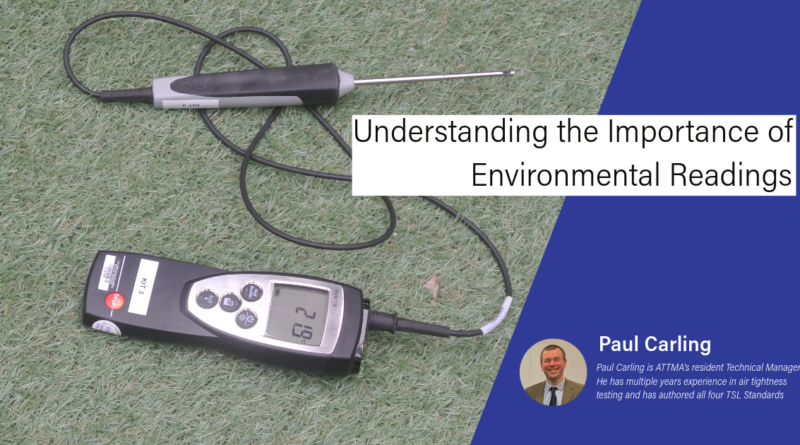The environmental readings taken on a test are the barometric pressure, external temperature and the internal temperature or the average internal temperature from several readings in taller buildings. All of these readings are taken before the test and then they are taken again at the end of the test.
Recording the Barometric Pressure
The barometric pressure can be recorded inside or outside the building and needs to be recorded both before and after the test. According to the ATTMA test standards this can be recorded in hPa or mBar to 1 decimal place which will be a number roughly around 1000 or in Pa to no decimal places which will be a number of roughly 100000.
If your software only has a single data entry point for barometric pressure then you need to record the readings within your notes section of your software for traceability. The mean average of the two readings is then entered into the data entry point.
Recording the Temperature Readings
The temperature readings are recorded in degrees Celsius to 1 decimal place and need to be allowed to stabilise when moving from the inside to the outside of the building or vice versa. Depending on the response time of the probe and thermometer and the amount of difference between the temperatures this can take between 2-10 minutes. The most common type of probe and thermometer used within the UK by air tightness testers typically takes 5-8 minutes to stabilise.
Internal temperatures are recorded at the approximate geometric centre of the building, so basically by the internal pressure tube. In the ATTMA test standards when you have taller buildings a temperature reading needs to be recorded for every sixth floor or part thereof i.e. 1-6 is one, 7-12 is two, etc. There’s no guidance on the location of where the multiple readings are taken but it makes sense to spread them evenly in the building.
External temperatures are to be taken by the fan.
Why do we record environmental readings?
The environmental readings are used to apply adjustments to the calculated flow values in the test because they are used to determine the weight of the air in kg/m3, which is known as air density. The weight of air determines how much volume of air can be moved through your fan with heavier than normal air reducing the volume and lighter than normal are increasing the volume. In air tightness testing we use a standardised air density of 1.2 kg/m3 so whether the air is light or heavy is relative to this value.
Click Page 2 to read more





